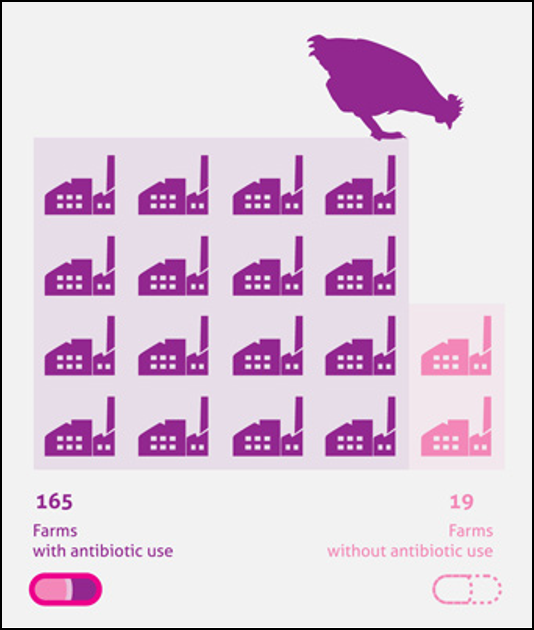Mycoplasma
Mycoplasma is a tiny genus of bacteria which is especially interesting, as they lack a cell wall around their cell membrane. They are considered pathogens in humans and animals. Their evolution to a parasitic lifestyle has led to a dramatic reduction of their genome. Mycoplasma have the smallest genome of all bacteria, some having as few as 580.000 base pairs (in comparison, a human genome has about 3 billion). The small size of their genome have made mycoplasma one of the most interesting objects of study in order to understand how life works. Mycoplasma was also the first bacteria, the genome of which has been entirely synthesized (Gibson et al. 2010). The fact that mycoplasma is both pathogenic and genetically of such small size makes it a prime candidate for engineering its genome to create a new type of vaccine.
Vaccines vs. Antibiotics
Large scale chicken factories, for example, use antibiotics on a regular basis. Massive use of antibiotics can lead to antibiotics-resistant pathogens affecting animals as well as humans. By contrast, vaccination does NOT lead to antibiotics-resistant pathogens, thus protecting animals and humans alike. For the majority of mycoplasma infections, there is no effective commercial vaccine, which presents a problem not only to the European economy (e.g. M. bovis in cattle and M. agalactiae in sheep). There is an urgent need worldwide for new and better vaccines against Mycoplasma pathogens.
Disease & Impact
Mycoplasma species infect a wide range of hosts. For farm animals, antibiotics can help prevent clinical signs and lesions and reduce economic losses, but they cannot eliminate infection and therefore do not present a satisfactory long-term solution. Similarly, as for other bacterial pathogens, the resistance to antibiotics that have shown efficacy against mycoplasmoses is rising.
Annually Mycoplasma infections of livestock cause several hundred million losses in Europe. For instance, Mycoplasma infections in poultry lead to an estimated economic loss in the USA of $780 million. In Europe, M. bovis costs the cattle industry close to 144 million Euros per year, while M. hyopneumoniae is responsible for estimated losses to the swine industry of more than $200 million per year.
Infection and sickness (red dot) lead to a delay in growth and economic losses. By contrast, vaccinated animals are protected against the respective diseases.
Source: Gibson, D. G.; Glass, J. I.; Lartigue, C.; Noskov, V. N.; Chuang, R.-Y.; Algire, M. A.; Benders, G. A.; Montague, M. G.; Ma, L.; Moodie, M. M.; Merryman, C.; Vashee, S.; Krishnakumar, R.; Assad-Garcia, N.; Andrews-Pfannkoch, C.; Denisova, E. A.; Young, L.; Qi, Z.-Q.; Segall-Shapiro, T. H.; Calvey, C. H.; Parmar, P. P.; Hutchison, C. A.; Smith, H. O.; Venter, J. C. (20 May 2010). "Creation of a Bacterial Cell Controlled by a Chemically Synthesized Genome". Science. 329 (5987): 52–56. doi:10.1126/science.1190719. PMID 20488990.


